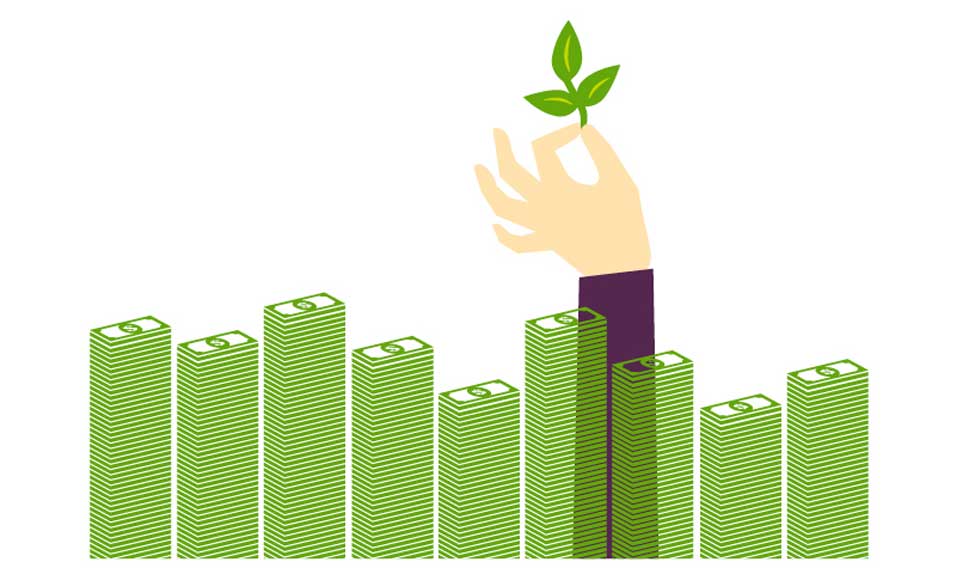Impact investing in India is still in its nascent stage but it is all set to become one of the most appealing investment options considering the huge and diverse demographic market size, which offers an enormous scope for scalability. Globally, there’s about $20 billion of private capital in impact investment today, compared to $2.5 trillion in private equity. According to McKinsey, impact investment in India topped for the first time in 2015 with an investment of $1 billion and, between 2010 and 2016, it mounted up to more than $5.2 billion as the market attracted more than 50 active impact funds. Impact investing in India could grow $8 billion a year by 2025. Financial inclusion and clean energy projects remain the most attractive sectors for investment.
What is impact investing? Who are the major stakeholders?
Impact investments are investments made into companies, organizations and funds with the intention to generate social and environmental impact alongside a financial return. Impact investments can be made in both emerging and developed markets, targeting a range of returns from below market to market rate, depending on investors' strategic goals. Sustainable agriculture, renewable energy, conservation, microfinance, and affordable and accessible basic services including housing, healthcare, and education are the main focus areas. Impact investments target financial returns that range from concessionary returns to risk-adjusted market rate, and can be made across asset classes such as private equity, fixed income and venture capital. At present BlackRock, Bank of America Merrill Lynch, Bain Capital are the leading players. Many global players became active in the last two years. There are around 30 active impact investors in India who have invested a cumulative $1.6 billion in approximately 300 enterprises in the area of financial inclusion, agribusiness, healthcare, education, clean energy etc. A majority share of this $1.6 billion impact investment in India has been garnered by seed and early stage enterprises especially in the financial inclusion sector, primarily focusing microfinance institutions.
Impact investing- The difference
Impact investment challenges the conventional view, that social and environmental issues should be addressed only by philanthropic donations, while market investments should focus only on financial returns. Impact investment offers dual mandate of achieving financial returns along with philanthropic touch. Many large corporates, family trusts and endowment programmes, and pension funds have a certain corpus for philanthropy. Usually such funds are allocated to NGOs, or non-profit organizations and some times to government welfare programmes. The biggest constraint here is to evaluate the end result of such action. Tracing and tracking monitory support is not easy to manage. Handicapped by issues like corruption, fraudulent practises, poor compliances and unregulated environment, such charities are often abused or misused, and fail to produce desired outcome.
Impact investing can also provide a solution to such constraints and help create a charity or an investment that can be measurable in terms of improvement of community, climate, and areas such as education, health care and agriculture. Community banking, micro-finance and, direct financial and educational support can contribute to inclusive growth.
A leading impact investment fund raise with a corpus of $2 billion (Rs 16000 crore), which is managed by TPG Growth, has invested $50 million in a private dairy called Dodla Dairy. The dairy collects 2.5 lakh litres of milk from 2.5 lakh small farmers. It has 11 milk cooling plants. Dairy sector in India is dominated by cooperatives and due to strict price regulation and lack of conducive environment, private players remained shy to enter the sector. Milk productivity in India is very poor compare to global standards. Input costs such as cattlefeed, transportation and storage is showing steep rise. With proper nutrition, efficient logistics and storage, profitability of dairy sector can be increased multifold.
How does impact investment perform financially?
Impact investors have diverse financial return expectations. Some intentionally invest for below-market-rate returns, often called as concessionary returns but the core objective is to achieve maximum impact with a goal of some return or some times just capital protection.
Global Impact Investing Network (GIIN) is an online database which provides help and awareness in this new hybrid domain. GIIN and Cambridge Associates introduced a bench mark, the first comprehensive analysis of the financial performance of market rate private equity and venture capital impact investing funds.
Rise of wealth...Rise of responsible investing
With soaring global equities, a consistent bull run in the bond market, private equity, residential real estate and technology stocks, global fund managers have amassed record household wealth in th recent times. Currently, global wealth in terms of collective stock market capitalisation is pegged at around $250 trillion. Impact investing market share is only fractional at just $20 billion. A very small fraction of this $250 trillion wealth pool could produce tremendous opportunity for the impact investing market. As more and more investors and funds turning towards Environment, Social and Governance (ESG) criteria, supporting sustainability and clean energy, the financial world is not far behind in their contributions to make the world a better place. Impact investing in a way is the rise of responsible investing.
–The author is the CEO of Paradigm Commodity Advisors
Disclaimer: The views expressed in this article are solely those of the author and do not necessarily represent the views of the publication.





